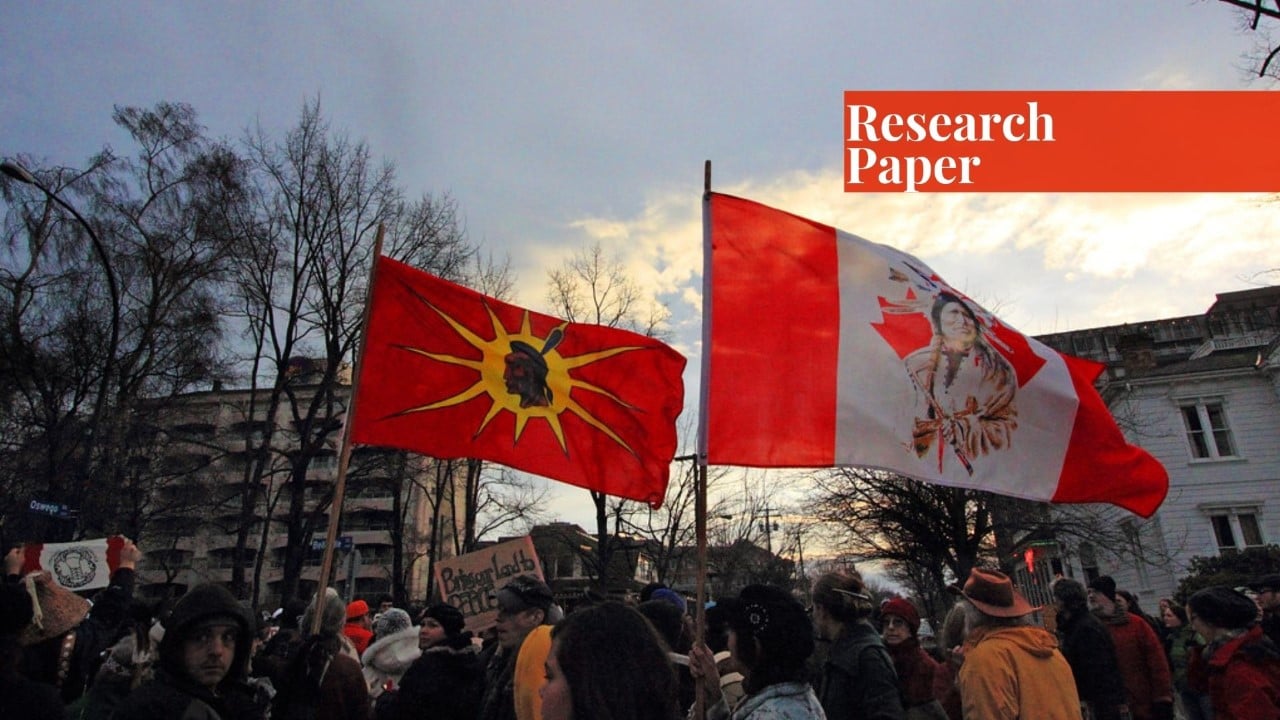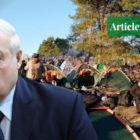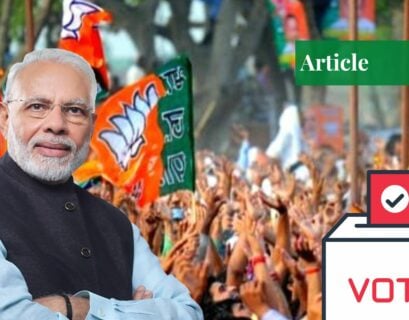Hurain Sheikh is a Pakistan-born Canadian. She has international work experience in West Canada, Dubai, and Islamabad. She is currently refining her experience by pursuing a degree in political science.
Contentious Politics
Public policies are generally formulated behind closed doors where certain issues are given importance while others are not. It is noted that in the occurrence of “mobilization of bias”: “some issues are organized into politics while others are organized out,” as stated by Schattschneider (Mair, 1997 p. 947).
Some advocates may use contentious means to pressure policymakers to modify policy and/or make social changes in society. So, how do contentious politics contribute to maintaining democratic life in Canada? I argue that contentions politics not only uphold democratic life in Canada but are a necessary resource for “outside” groups to manifest their civil and political rights.
Contentious politics is when ordinary people use confrontational and unconventional tactics against political authorities towards making a social or political point. It is a less formalized and institutionalized manner towards creating public awareness on issues and is generally triggered by a lack of political opportunity, resources, and constraints surrounding certain individuals or communities (Tarrow, 2011).
Contentious tactics are employed most frequently by “outside” groups who are not able to participate in policy discussions and because of this, contentious means are the only mechanisms available to them that can assist with gaining widespread public support, generate discussion around their issues, and gain media attention (Tilly & Tarrow, 2015).
Moreover, non-traditional political methods have become more appealing to journalists than previously employed formal legislative methods. For this reason, media attention is an important tool for outside groups because it provides them with a platform to express their needs, gain public support, and thereby capture the attention of decision-makers.
Movements & Protests
Social movements and protests are considered an ordinary form of contentious action and a healthy aspect of democratic societies. Democracies depend on citizens coming together (freedom of association) and expressing their views towards political decisions. This is considered a form of active political participation from citizens, ideally free from state intervention (intimidation) (Dickovick et al., 2020).
Therefore, while journalism and media outlets allow for citizens to be aware of political life, public gatherings, interactions, and social networking among citizens in the form of social movements maintain the democratic culture of society. These movements are generally organized outside of the state system and are done over time by mobilizing people into collective movements in the pursuit of common goals (Dickovick et al., 2020).
For example, such movements have pursued the expansion of political and civil rights towards women, minority groups, and LGBTQ+. It is important to note that although social movements use public demonstrations and rely on radical strategies to reach their social and political goals, spontaneous protests in the form of riots and mobs are not considered part of social movements.
To explain, social movements encompass community organized activities that are consciousness-raising, educational, and include political lobbying (Dickovick et al., 2020). Moreover, peaceful acts of civil disobedience to raise awareness against injustice is a fixed tradition within North America (Young & Everitt, 2014). These are the reasons why contentious actions in the form of social movements and protests have reserved a place in democratic societies that are outside of formal political participation.
The Other Side
Contrastingly, these tactics pose a high risk for marginalized groups as they can produce impactful results, but they can also reduce government sympathy for their causes (Young & Everitt, 2014). Without the support of the general population and positive media coverage, protest tactics are less likely to change government positions or the social norms in society.
Moreover, governments can measure the extent of public support behind a social movement, thereby making public institutions less willing to acknowledge issues that have little support from the population (Young & Everitt, 2014). Another concern linked with social movements is the oftentimes aggressive response of governments towards public demonstrations. Some Canadian governments have used their power to monitor potential protesters to limit their demonstrations and organized events using inappropriate force (Young & Everitt, 2014).
The clearest example of this inappropriate display of power has been predominantly towards indigenous causes with the involvement of the Royal Canadian Mounted Police (RCMP) and even the army (as seen with the Oka Crisis). They are branded as “communities of concern” in surveillance reports by the RCMP, and popular news channels have often framed their issues in a way that devalues them and discredits their causes (Lukacs, 2020). This can potentially mitigate public support.
Canada’s Social Movements
Historically, social movements became part of Canadian democratic culture during the 1960s, especially after Pierre Trudeau’s election campaign “The just society”. Another aspect of Canadian society that encourages identity-based mobilization and political action is the continued effect of colonization on indigenous peoples despite being officially a multicultural society (Ramos & Rodgers, 2016).
The confrontation and resistance of the indigenous towards the Canadian government span over 500 years due to colonialism. This is conceptualized as a contentious collective action as the indigenous people are a marginalized community that do not have recognition of their basic interests or rights. This results in the employment of contentious means as their only resource for recognition of their rights and identities.
Political activism by indigenous people in Canada goes as far back as the late 19th century, especially in the wake of the Federal Government’s proposed “White Paper” policy in 1969 (Ramos & Rodgers, 2016). This policy was reflective of the long history of government assimilation policies and laws towards the indigenous people as then-Prime Minister Pierre Trudeau said, “We must all be equal under the laws and we must not sign treaties amongst ourselves.” (Neeganagwedgin, 2020 p. 87)
Here, the government proposed to abolish treaties and the Indian Act, thereby dismantling any legal recognition of indigenous people towards the end goal of assimilation. Criticism and backlash from indigenous communities across the country towards this policy resulted in the government withdrawing the White Paper policy. Moreover, this led to the founding of the indigenous organization – Assembly of First Nations – and activism gaining political recognition in Canadian society (Neeganagwedgin, 2020).
In 2012, the indigenous movement became transnational during the “social media-intensive” resistance movement known as “Idle No More” (INM) (Marshall, 2013). This mass movement was another reaction to experiencing 150 years of anti-Indigenous governments. This led indigenous and non-indigenous activists and leaders to form a collective movement towards changing the discourse surrounding indigenous identity with the help of social media.
It was initially founded by four indigenous women based in Saskatchewan: Nina Wilson, Sylvia McAdam, Jessica Gordon and Sheelah McLean, who exchanged e-mails regarding political matters including the introduction of Bill C-45 (The Jobs and Growth Act). It was a protest against this omnibus legislation by Stephen Harper’s Conservative government as it affected the Indian Act, Navigable Waters Protection Act, Environmental Assessment Act, and others with little to no consultation with the affected indigenous communities (Marshall, 2013).
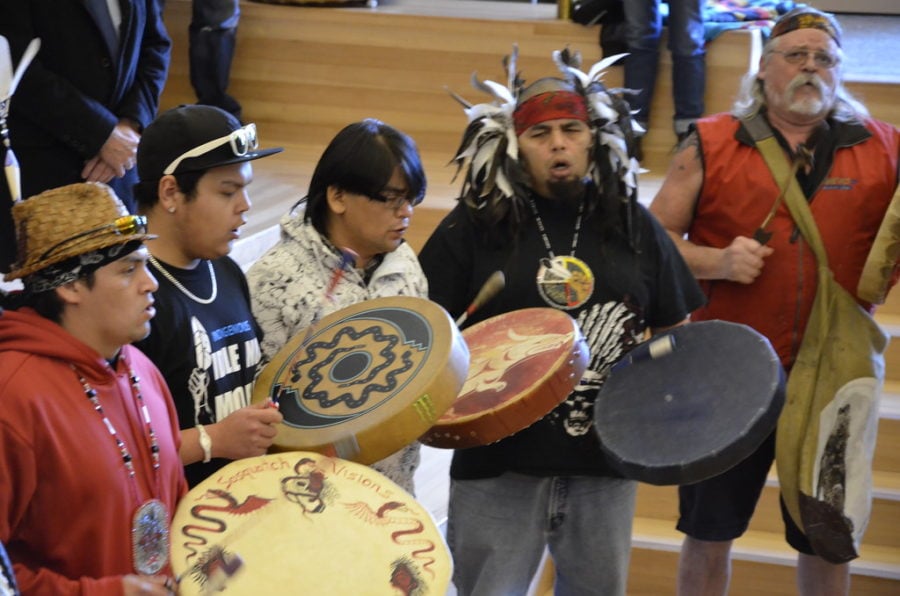
Activists of the Idle No More movement argued that this diminished the rights and authority of Indigenous communities over their reserve land by authorizing the state and businesses to push through pipeline projects without their consultation. Moreover, this heavily impacted the environment due to the weakening of environmental assessment procedures and reducing the number of protected water bodies (Richez et al., 2020). Therefore, what had initiated as exchanges of e-mails between four women led to the establishment of a Facebook page, “Idle No More.”
Over the following weeks, teach-ins and other events were organized throughout Canada to shed light on the issues related to Bill C-45. With the help of social media, the Idle No More movement quickly gained support across the world from both indigenous and non-Indigenous people. The widespread movement led to rallies, demonstrations, hunger strikes, cross-country walks, and “flash mobs” for the INM causes (Richez et al., 2020). By 2013, this movement had gained thousands of supporters worldwide towards environmental causes and recognition of indigenous sovereignty and rights.
Once the Idle No More movement gained traction and became more widespread, it mobilized other individuals and organizations “outside” of the indigenous communities to further vocalize their issues, which include, but are not limited to, issues related to socioeconomic conditions, the history of cultural genocide in residential schools, missing and murdered Indigenous women, reconciliation, and the revival of their culture (Richez et al., 2020).
Due to the intensive media coverage and publicity, this puts significant pressure on the government and pushed Prime Minister Stephen Harper to meet with leaders from the Assembly of First Nations.
Purpose
When discussing the effectiveness of contentious tactics, it is important to note that social movements and protests are not solely intended to influence public policy. Generally, protest activists measure the success of an event if it gains many supporters or acquires extensive media coverage (Young & Everitt, 2014). Even though media coverage for the Idle No More movement declined after the meeting between Stephen Harper and delegates from the Assembly of First Nations, this movement had continued to advocate broader community issues and formed alliances with other indigenous-based activists (Marshall, 2013).
The example of the Idle No More movement depicts the importance of social media as a necessary tool for political communication, mobilization, and organization for marginalized groups. As stated previously, these groups do not have access to formal political means to empower themselves. Hence, they use social media platforms to make their voices heard and be active politically outside more institutionalized paths of political and civic engagement.
These new technological means have enabled them to challenge the status quo and encourage political change (Richez et al., 2020). Therefore, many members of indigenous communities have turned to social media to be active politically, especially in the case of INM. Journalists and scholars have noted that the Idle No More movement was mostly driven by social media as the #IdleNoMore hashtag had become a global “rallying cry” (Raynauld et al., 2017 p. 627).
In the context of resource mobilization, the efficiency of social movements depends on the capacity to mobilize its members’ resources that could be cultural, social, technical, or material (Jenkins, 1983). Social media in this way facilitated the intensification and diversification of the Idle No More movement’s resources by enabling geographically dispersed individuals with similar goals to connect and interact with ease (Richez et al., 2020).
Idle No More
For example, INM’s mobilization of resources outside the more traditional realm of politics (i.e. lobbying) was strong enough to put significant pressure on the government to engage with members from Indigenous Affairs. These affairs became part of the political agenda as there were six oral questions that explicitly mentioned “Idle No More” in the House of Commons between December 2012 to November 2013 (Richez et al., 2020).
This depicts how the traditional barriers of geographic, political, and economic marginalization can be tackled by digital technologies and can even have an impact on policymakers. This is also reflective of how these technologies can be used towards honouring and rejuvenating cultural practices, identities, and showcasing indigenous resilience (Rodgers & Scobie, 2015).
It was noted that in early November 2012, the #IdleNoMore hashtag had gained traction on different social media platforms. By January 2013, 743,365 tweets with the #IdleNoMore hashtag were shared on Twitter, which worked simultaneously as an online and offline protest. For example, many of these hashtags and tweets “consisted of invitations to participate in mobilization events [. . .] or more general calls to personal and collective political action in online and offline settings” (Raynauld et al., 2017, p. 633).
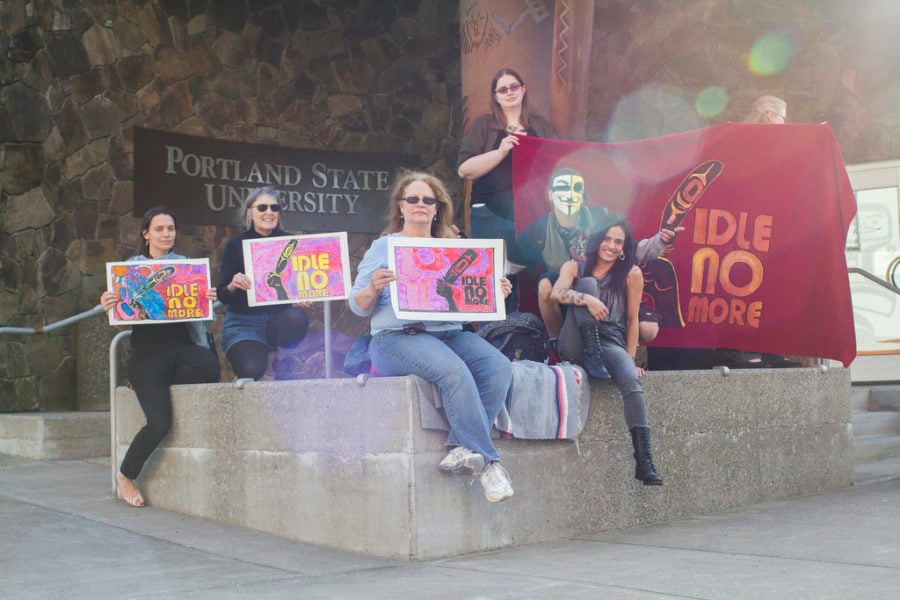
In this context, the use of social media created a wide-ranging mixture of protest tactics that encompassed traditional methods of non-violent direct actions or civil disobedience; and newer forms of political action that are shaped by digital media’s interactive features as seen with the extensive use of “hashtags” (Richez et al., 2020). This generated a multitude of conversations around Indigenous issues, connected individuals to protest events and initiatives, and led to the emergence of newer crowdsourced narratives (Raynauld et al., 2017).
It allowed INM activists and supporters to develop their own narratives by bypassing traditional media and political elites, enabling activists to have more control and power over the content and circulation of their message (Callison & Hermida, 2015). Moreover, the ability to influence the public through alternative means as noted by Callison and Hermida (2015) demonstrated quantitatively that the top influencers of #IdleNoMore on Twitter included many non-elite actors that represented alternative voices to mainstream media and institutionalized groups.
Many scholars indicate that narratives are especially important for social movements by allowing them to reach various objectives and shedding light on issues that are otherwise ignored (Davis, 2002). To explain, political narrative plays a vital role in constructing political identities, perspectives, and ideologies. This refers to the ways in which our ideas are constructed, and our perceptions of realities are formed. As a result, this affects and formulates our actions towards political events related to society. In this sense, political realities are created using narratives (Shenhav, 2006).
Political discourses (similar to media) rely heavily on the construction of narratives towards shaping the understanding of society and events. While public institutions use political narratives to construct perspectives of identities and influence our relationships with other social groups; narratives equally contribute to building public support for causes, shaping the public discourse, and generating political action (Richez et al., 2020).
In the context of the Idle No More movement, social media had promoted the narratives of several indigenous and alternative voices towards a collective articulation of the movement’s concerns. As stated previously, traditional media coverage towards indigenous issues in Canada is generally poor as said communities have either been underrepresented or have been negatively portrayed.
During the Idle No More movement, it was noted that mainstream media failed to fully capture the momentum of the movement (Callison & Hermida, 2015). In this context, Twitter became an important platform for news and events related to INM and for members to articulate the significance of the movement. During the height of the movement, it was noted that the Twitter stream contained “crowdsourced elite” that was composed of indigenous individuals who were usually absent or underrepresented in mainstream media.
Moreover, their “elite status” was due to the number of retweets and views they had attracted rather than the traditional markers of “influence” (money, status) (Callison & Hermida, 2015). The findings indicated that a significant presence of non-elite actors was noted both in the top 500 influential voices and retweeted sources on Twitter, which indicated citizens’ ability to reframe or reinterpret the messages through networked platforms.
While the top 25 influential voices are primarily institutional elites, when considering which messages were retweeted the most, the ranking becomes complicated and diverse (Callison & Hermida, 2015). On one hand, there were leading voices from the Idle No More movement and popular indigenous individuals that had emerged and, on the other, were the voices of mainstream media that openly challenged the movement (Callison & Hermida, 2015).
Here, Twitter had become a middle ground for the distribution and representation of news and information from different groups. Other findings depict that the INM related engagement on Twitter distinguished itself by making references to indigenous culture. Analysis indicated that 85% of the #IdleNoMore tweets featured at least one reference to indigenous culture such as land, group membership, and epistemologies (Callison & Hermida, 2015).
Here, we can see that culture and identity played a key role in how the Idle No More movement manifested itself on social media and was driven by concerns related to political identity and civil rights. In the context of political outcomes, this resulted in INM bringing attention to indigenous related issues that were broader than those simply related to Bill C-45 (Raynauld et al., 2017).
Conclusion
After the emergence of INM, there was a larger volume of questions related to indigenous affairs during the Question Period in the House of Commons. Some of these questions were related to their socio-economic conditions, violence against women, health, education and land claims/land-based rights, which connected back to some activists’ main demands and broader issues (Richez et al., 2020).
Although there was a change in political narrative and more focus towards indigenous issues after the emergence of INM, policy outcomes remained relatively stagnant during Harper’s government. It was three years after the emergence of this movement that some policies were shaped in favour of indigenous communities under Justin Trudeau’s Liberal government such as the $8.4 billion that was allocated towards indigenous peoples’ programs. This also includes the establishment of the National Inquiry into Missing and Murdered Indigenous Women and Girls in 2016 (Richez et al., 2020).
As seen in this paper, the use of contentious politics in the forms of social movements and protests are necessary towards preserving the democratic culture of society. This enables citizens from outside groups to form associations and express their fundamental rights through direct actions by influencing public policies and social norms. For some groups, particularly the indigenous communities in Canada, these are the only means available to them due to being oppressed and marginalized by the same institutionalized governments that supposedly represent their “interests”.
As seen with the example of the Idle No More movement, activists were able to bring attention to indigenous issues in Parliament and although there was no immediate change to policies, the Idle No More movement was able to build momentum using social media and influence the political narrative. This changed the discussions surrounding the aforementioned communities and raised concerns towards their issues, which ultimately led to more favourable policies. Therefore, using the example of indigenous communities in Canada, we can understand how marginalized groups make use of contentious politics and social media to successfully impact political and social norms in society.
References
- Callison, C., & Hermida, A. (2015). Dissent and resonance: #idlenomore as an emergent Middle Ground. Canadian Journal of Communication, 40(4). https://doi.org/10.22230/cjc.2015v40n4a2958
- Davis, J. E. (2002). Stories of Change: narrative and social movements. State University of New York Press.
- Dickovick, J. T., Eastwood, J., & MacDonald, D. B. (2020). Comparative politics: Integrating theories, methods, and cases. Oxford University Press.
- Jenkins, J. C. (1983). Resource Mobilization Theory and the Study of Social Movements. Annual Review of Sociology, 9(1), 527–553. https://doi.org/10.1146/annurev.so.09.080183.002523
- Lukacs, M. (2020, March 27). The Long Road to this winter of protests. The Tyee. https://thetyee.ca/Analysis/2020/03/27/The-Long-Road-This-Winter-Protests/
- Mair, P. (1997). E. E. Schattschneider’s The Semisovereign People. Political Studies, 45(5), 947–954. https://doi.org/10.1111/1467-9248.00122
- Marshall, T. (2013). Idle no more. The Canadian Encyclopedia. https://www.thecanadianencyclopedia.ca/en/article/idle-no-more
- Neeganagwedgin, E. (2020). Indigenous Lands and Territories: Self-determination, Activism and Canada’s White Paper. The Journal of Diplomacy and International Relations, 21(1), 84-96. https://blogs.shu.edu/journalofdiplomacy/files/2020/03/Erica-Neeganagwedgin-Indigenous-Lands-and-Territories.pdf
- Ramos, H., & Rodgers, K. (2015). Protest and Politics: The promise of social movement societies. UBC Press.
- Raynauld, V., Richez, E., & Boudreau Morris, K. (2017). Canada is #IdleNoMore: Exploring dynamics of indigenous political and civic protest in the twitterverse. Information, Communication & Society, 21(4), 626–642. https://doi.org/10.1080/1369118x.2017.1301522
- Richez, E., Raynauld, V., Agi, A., & Kartolo, A. B. (2020). Unpacking the political effects of social movements with a strong digital component: The case of #idlenomore in Canada. Social Media + Society, 6(2), 205630512091558. https://doi.org/10.1177/2056305120915588
- Rodgers, K., & Scobie, W. (2015). Sealfies, seals and celebs: expressions of Inuit resilience in the Twitter era. Retrieved December 3, 2021, from https://www.interfacejournal.net/wordpress/wp-content/uploads/2015/06/Issue-7-1-Rodgers-and-Scobie.pdf
- Shenhav, S. R. (2006). Political narratives and political reality. International Political Science Review, 27(3), 245–262. https://doi.org/10.1177/0192512106064474
- Smith, M. C. (2014). Group politics and Social Movements in Canada. University of Toronto Press.
- Tarrow, S. G. (2011). Power in movement: social movements and contentious politics (Rev. & updated 3rd, Ser. Cambridge studies in comparative politics). Cambridge University Press.
- Tilly, C., & Tarrow, S. G. (2015). Contentious Politics: Vol. Second edition, fully revised and updated. Oxford University Press.
- Young, L., & Everitt, J. (2014). Advocacy groups. UBC Press.
If you want to submit your articles and/or research papers, please check the Submissions page.
The views and opinions expressed in this article/paper are the author’s own and do not necessarily reflect the editorial position of Paradigm Shift.
